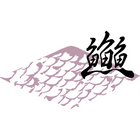The making of our product

We will explain the rough process until the raw fish skin becomes leather and transform it into leather products.

We will eat the skin that will be disposed of by a fish shop or something. Fish skin is discarded when processed into sashimi or other products. This is a part you don't usually see, but the amount of waste fish such as the head and internal organs, including the skin, amounts to 660,000 tons per year.

When the fat is oxidized, it causes a fishy smell, and removes the flesh and fat that has been found on the skin.
This is very important to remove the fishy smell, so we carefully work on each piece.
Therefore, it is also the most difficult task.

The skin, which is rich in moisture, will quickly rot. Therefore, the skin that has been removed from the fat is sprinkled with salt, salt it, and store it in dryness. We aim to achieve a uniform finish by selecting and storing skins with different fish species and thickness depending on the season.

The skin that has been stored after drying is still fat, so it is soaked in a degreasing bleaching solution to thoroughly remove the fat, and at the same time bleaching the dirt and color.
After repeating the process for about two weeks, the fish gradually disappears.

The tannins, a plant-based ingredient, penetrate the fish skin and process it into leather.
The skin is soaked in a tannin solution that dissolves the tannins, astringent ingredient found in tea and other ingredients, and after going through this process for two weeks, the skin is sturdy and supple.

Dyed finished fish leather to the attention color, will continue to work with the product.

In order to make the thickness of the fish leather uniform, it is made (thinly shaved the back) and cut into the size of each product. Work carefully while concentrating to process it to an appropriate thickness and size.

Sew the fish leather one by one one needle carefully. It is a very nervous task because there are parts that cannot be corrected if the sewing width and curves fail.

Polish the cut "Koba" after the last sewing and repeatedly paint to focus on ease of use and beauty. Fish leather with different scales makes the only one finish.




